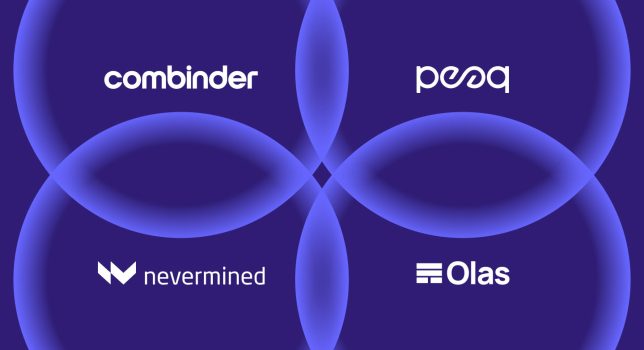AI, or artificial intelligence, is playing an increasingly important role in the banking industry. AI has already started transforming the banking industry, and it is expected to have an even greater impact in the future. The use case of AI in banking is increasing on a daily basis. There are several ways in which AI is being used in banking.
Fraud detection:
Fraud detection is a critical use case in the banking industry, as it is essential to protect customers’ funds and prevent financial losses for the bank. Here is an example of how fraud detection can be implemented in banking sector.
Scenario:
A customer reports that they did not authorize a transaction on their account, and the bank is investigating the transaction to determine if it is fraudulent.
Solution:
The bank can use a fraud detection system that analyzes various data points, including transaction history, location data, and behavior patterns, to identify potential fraudulent activity. The system can also use machine learning algorithms to learn from past cases of fraud and continuously improve its ability to detect new cases.
The following steps could be taken to detect fraud in this scenario:
Real-time transaction monitoring: The bank can monitor transactions in real-time and flag any transactions that are outside the normal behavior of the customer. For example, if the customer typically makes transactions in one location and suddenly makes a large transaction in a different location, this could be flagged as potentially fraudulent.
Analysis of transaction history: The bank can analyze the customer’s transaction history to identify any patterns or trends that may indicate fraudulent activity. For example, if the customer has a history of making small transactions and suddenly makes a large one, this could be flagged as potentially fraudulent.
Location data: The bank can use location data to verify the location of the transaction and compare it to the customer’s usual location. If the transaction occurs in a location that is not typical for the customer, this could be flagged as potentially fraudulent.
Behavioral patterns: The bank can analyze the customer’s behavior patterns to identify any unusual behavior that may indicate fraudulent activity. For example, if the customer typically makes transactions during the day but suddenly makes one at night, this could be flagged as potentially fraudulent.
Personalization: AI In Banking
AI algorithms can analyze customer data to identify their preferences and needs, allowing banks to offer personalized products and services that are tailored to each individual’s needs.
Personalized product recommendations: Banks can use AI algorithms to analyze customer transaction data, purchase histories, and other relevant data to make personalized product recommendations. For example, if a customer frequently uses their credit card to buy groceries, the bank could recommend a credit card with rewards for grocery purchases.
Personalized customer service: Many banks now use AI-powered chatbots to handle customer inquiries. These chatbots can use natural language processing to understand customer requests and provide personalized responses. For example, a chatbot could help a customer with a specific question about their account balance or recommend a specific product based on their needs.
Personalized financial advice: AI algorithms can analyze a customer’s financial data, such as income, expenses, and savings, to provide personalized financial advice. For example, a bank could provide a personalized savings plan for a customer based on their income and spending habits.
Personalized loan offers: AI algorithms can analyze a customer’s credit history and financial data to provide personalized loan offers. For example, a bank could offer a lower interest rate to a customer with a good credit score or offer a larger loan amount to a customer with a higher income.
Risk management: AI in Banking
Risk management is a critical aspect of banking, and the use of AI in this domain can significantly enhance risk assessment, mitigation, and monitoring. Here’s a use case for risk management using AI in banking.
Credit Risk Assessment: AI algorithms can be used to assess the creditworthiness of a customer based on their credit history, income, and other financial factors. Machine learning models can be trained to identify patterns and trends that indicate a higher risk of default. This can help banks to make more informed lending decisions and reduce the risk of loan defaults.
Fraud Detection: AI algorithms can be used to identify fraudulent transactions by analyzing large volumes of data in real-time. Machine learning models can be trained to detect patterns that indicate fraudulent activity, such as unusual spending patterns or transactions that are inconsistent with a customer’s typical behavior. This can help banks to prevent financial losses due to fraud.
Anti-Money Laundering (AML) Compliance: AI algorithms can be used to monitor transactions and identify suspicious activity that may be indicative of money laundering. Machine learning models can be trained to identify patterns that are common in money laundering schemes, such as transactions that involve multiple parties or large sums of money. This can help banks to comply with AML regulations and prevent financial crimes.
Market Risk Analysis: AI algorithms can be used to analyze market data and identify potential risks to a bank’s portfolio. Machine learning models can be trained to detect patterns and trends in market data that may indicate a higher risk of losses. This can help banks to make more informed investment decisions and reduce the risk of financial losses due to market volatility.

AI could add $16 trillion to the global economy by 2030
Yes, according to a report by McKinsey Global Institute, AI has the potential to add $16 trillion to the global economy by 2030. This estimate is based on a scenario in which AI is adopted widely across different sectors, leading to increases in productivity, consumption, and market creation.
However, it is important to note that this estimate is based on certain assumptions and projections, and the actual impact of AI on the global economy will depend on various factors such as the pace of technological development, the level of investment in AI research and development, and the extent of AI adoption by businesses and governments around the world.
AI automating Jobs will it replace humans?
Artificial Intelligence (AI) is already being used to automate many jobs, and it is likely to continue to do so in the future. However, it is important to note that AI will not replace humans entirely. Instead, it will augment and enhance human capabilities, enabling us to do more in less time, with greater accuracy and efficiency.
AI is particularly good at repetitive, rules-based tasks that require a high level of accuracy and speed. This includes tasks like data entry, processing, and analysis. As AI systems become more advanced, they will be able to perform increasingly complex tasks, including those that require creativity and critical thinking.








